#Melaleuca Quinquenervia
Text
<b>Nioli</b> Yağı
Nioli Yağı

#AğrıKesici, #AntiInflamatuar, #Antibakteriyel, #Antifungal, #Antiviral, #AvustralyaYağı, #BağışıklıkSisteminiGüçlendirici, #CiltSağlığınıIyileştirici, #MelaleucaQuinquenerviaYağı, #NioliYağı, #RuhHaliniIyileştirici, #SaçSağlığınıIyileştirici, #SpazmÇözücü, #StresGiderici, #UykuDüzenleyici, #YalancıÇivitYağı, #YeniGineYağı https://is.gd/bcuQwK https://www.tibbivearomatikbitkiler.com/yaglar/nioli-yagi/
Nioli yağı, Melaleuca Ağacı (Melaleuca quinquenervia) ağacının yapraklarından elde edilen bir uçucu yağdır. Bu ağaç, Avustralya ve Yeni Gine’de yetişir. Berrak ile kehribar sarısı arası bir renkte, sulu, narenciye/limon kokulu. ve kendine özgü bir kokuya sahiptir.
Antibakteriyel, antifungal ve antiviral özelliklere sahiptir. Bu nedenle, cilt enfeksiyonları, solunum yolu enfeksiyonları ve idrar yolu enfeksiyonları gibi çeşitli sağlık sorunlarının tedavisinde kullanılmaktadır. Ayrıca ağrı kesici ve spazm çözücü özelliklere sahiptir. Bu nedenle, baş ağrısı, migren, kas ağrısı ve adet krampları gibi ağrıların tedavisinde kullanılmaktadır. Topikal olarak uygulanabilir, oral olarak tüketilebilir veya aromaterapide kullanılabilir.
Tıbbi Kullanımlar: Geleneksel tıp uygulamalarında enfeksiyonları ve cilt problemlerini tedavi etmek amacıyla kullanılmıştır. Antiseptik özellikleri nedeniyle yara bakımında destekleyici olarak kullanılabilir.
Aromatik Özellikler: Nioli yağının ferahlatıcı ve odunsu bir kokusu vardır. Aromaterapi uygulamalarında rahatlatıcı etkileri olduğuna inanılır.
Sağlık Faydaları: Nioli yağı, solunum yolu sorunlarının hafifletilmesine yardımcı olabileceği düşünülür. Ancak, sağlık profesyoneli önerisi olmadan iç veya harici kullanımından kaçınılmalıdır.
Kullanım Alanları: Masaj yağları, banyo ürünleri veya aromaterapi karışımlarında kullanılabilir. Cilt bakımında seyreltilmiş halde kullanımı yaygındır.
Ruh halini iyileştirmeye yardımcıdır. Bu nedenle, depresyon, anksiyete ve stres gibi ruhsal sağlık sorunlarının tedavisinde kullanılmaktadır. Nioli yağı, ayrıca uykusuzluk ve yorgunluk gibi uyku sorunlarının tedavisinde kullanılmaktadır.
Bilimsel Araştırmalar: Nioli yağı hakkında yapılan klinik araştırmaların eksikliği nedeniyle, sağlık faydaları konusunda daha fazla çalışmaya ihtiyaç vardır.
Nioli Yağı Faydaları
Antibakteriyel
Antifungal
Antiviral
Anti-inflamatuar
Ağrı kesici
Spazm çözücü
Ruh halini iyileştirici
Uyku düzenleyici
Stres giderici
Cilt sağlığını iyileştirici
Saç sağlığını iyileştirici
Bağışıklık sistemini güçlendirici
Nioli Yağının Kullanım Alanları
Cilt enfeksiyonları
Solunum yolu enfeksiyonları
İdrar yolu enfeksiyonları
Baş ağrısı
Migren
Kas ağrısı
Adet krampları
Depresyon
Anksiyete
Stres
Uykusuzluk
Yorgunluk
Cilt sağlığı
Saç sağlığı
Bağışıklık sistemi güçlendirme
Nioli Yağının Yan Etkileri
Nioli yağı, genellikle güvenlidir. Ancak bu yağın saf formu cilde tahrişe neden olabilir. Herhangi bir yeni ürünü kullanmadan önce cilt testi yapılması önerilir. Hamilelik ve emzirme döneminde kullanımından kaçınılmalıdır. Nioli yağını kullanmadan önce, mutlaka bir doktora danışmalısınız.
#ağrı kesici#anti-inflamatuar#antibakteriyel#antifungal#antiviral#Avustralya yağı#bağışıklık sistemini güçlendirici#cilt sağlığını iyileştirici#Melaleuca quinquenervia yağı#nioli yağı#ruh halini iyileştirici#saç sağlığını iyileştirici#spazm çözücü#stres giderici#uyku düzenleyici#yalancı çivit yağı#yeni gine yağı
0 notes
Text
inspired by @starfoozle's poll - happy national invasive species week!
visual supplement below (and some help narrowing down the list) provided by @obeetlebeetle

#polls#invasive species#everglades#i said i'd do it and i did!!!!!#capital stuff#honorable mention to australian pine + nile monitor lizard + black and white tegu. all cool guys but not cool enough to make top 9
560 notes
·
View notes
Text
Big tree down
Malaleuca tree needed to be taken down
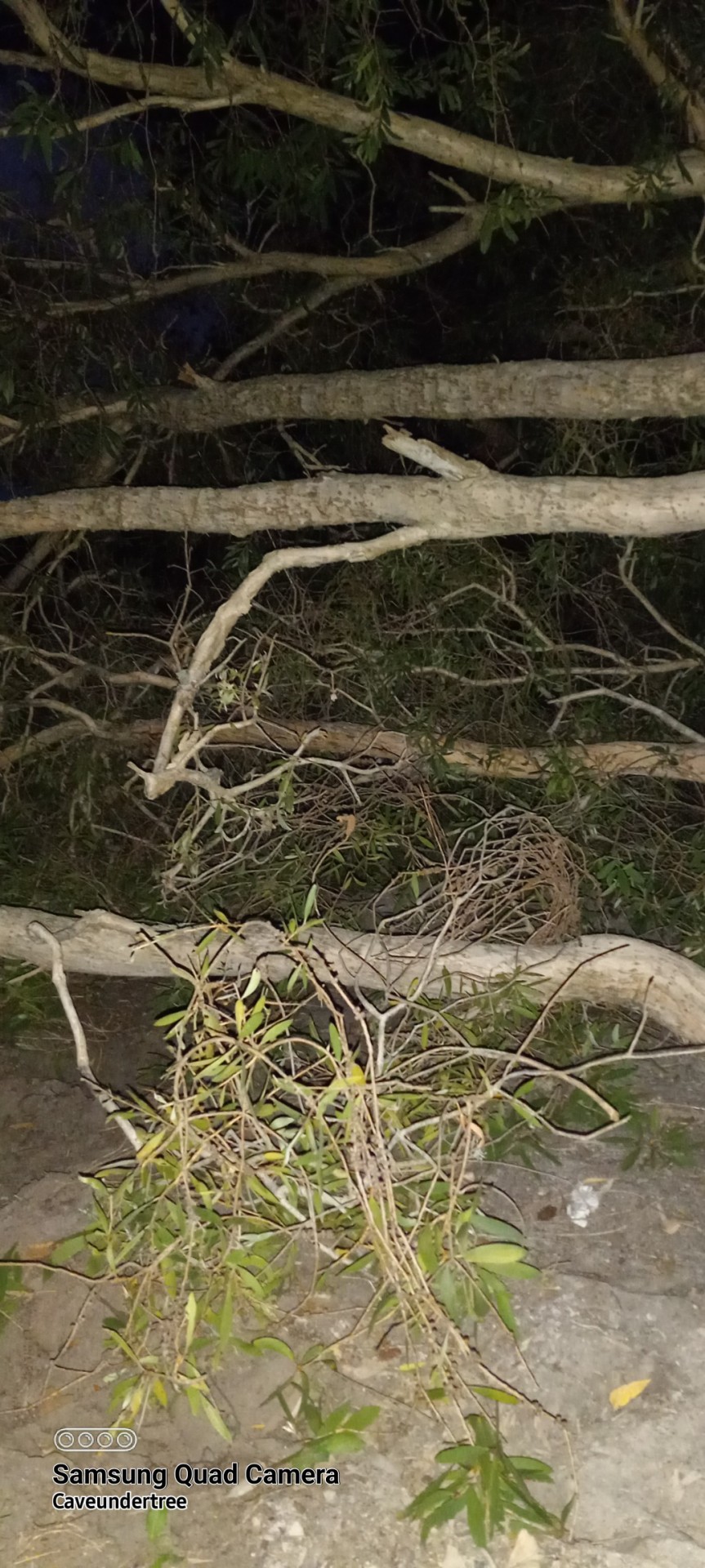

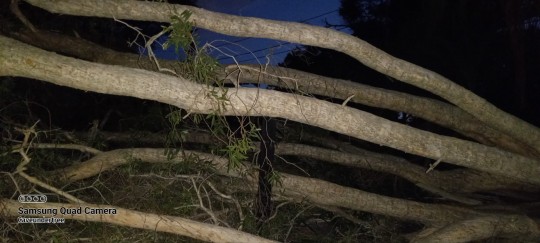
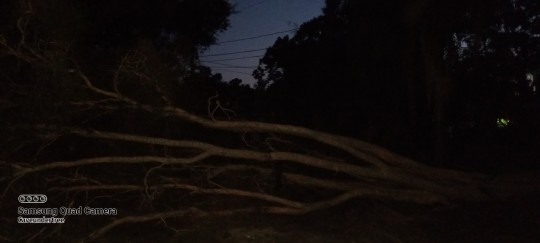
3 notes
·
View notes
Text
12 Drought-Resistant Trees In Australia
In the vast, sunbathed landscapes of the Land Down Under, the challenge of cultivating flora that can endure with the help of tree loppers Sydney arid conditions is both an art and a science. This ecological endeavour is not merely about aesthetic landscaping; it's a crucial strategy for sustaining local biodiversity and preserving the natural beauty of the region. As climate patterns continue to evolve, leading to longer and more intense dry spells, the importance of selecting the right species that can thrive in these conditions becomes paramount.
The following guide delves into the trees with the ability to withstand prolonged periods of dry weather. These species are not only survivors but also symbols of the strength and adaptability of the natural world, making them ideal for gardens and landscapes in areas prone to drought. By incorporating these species into our surroundings, we not only enhance the beauty of our environment but also contribute significantly to ecological conservation and resilience in the face of changing climate conditions.
Eucalyptus Gregsoniana
This species, often found in the Blue Mountains, stands out for its robustness in dry conditions. Its narrow leaves and distinct bark make it an excellent choice for water-conservative landscapes.
Brachychiton Acerifolius
Commonly known as the Illawarra Flame, this specimen is celebrated for its spectacular red blossoms. Native to the coastal regions, it's remarkably tolerant to dry spells.
Acacia Pycnantha
Known as the Golden Wattle, this flora is renowned for its vibrant yellow flowers. It's a national symbol of resilience and beauty, thriving in the harshest of climates.
Callistemon Viminalis
Often referred to as the Weeping Bottlebrush, this variety is prized for its unique, brush-like flowers. It is a favourite in gardens for attracting wildlife while requiring minimal hydration.
Angophora Costata
Resembling the more commonly known eucalypts, this species, with its twisted limbs and strikingly smooth bark, is a staple in dry landscapes, offering both shade and aesthetic appeal.
Banksia Integrifolia
The Coastal Banksia is easily recognized by its elongated flower spikes and serrated leaves. It's an iconic coastal species that can survive with very little moisture.
Corymbia Ficifolia
Often termed the Red Flowering Gum, this vibrant flora is a show-stopper with its bright red blossoms. It's a popular choice for adding a splash of colour to arid gardens.
Grevillea Robusta
The Silky Oak is distinguished by its fern-like foliage and golden flowers. This fast-growing species is a favourite among local fauna and requires little water once established.
Melaleuca Quinquenervia
The Broad-leaved Paperbark is known for its papery bark and creamy flowers. It's often found in coastal areas and is highly adaptable to dry conditions.
Allocasuarina Verticillata
Commonly called the Drooping Sheoak, this flora is notable for its needle-like foliage and ability to survive in nutrient-poor soils with minimal water.
Livistona Australis
This palm variety, native to the eastern coastlines, adds a tropical touch to any landscape. Despite its lush appearance, it's surprisingly drought-hardy.
Hakea Laurina
The Pin-cushion Hakea is a unique species with round, pincushion-like flowers. It's a striking addition to any water-wise garden, requiring minimal care.
The cultivation of these drought-resistant species is more than a gardening choice; it's a testament to the resilience and diversity of the natural world. In an era where ecological sustainability is of paramount importance, choosing plants that can endure harsh weather conditions is a step towards a more resilient and environmentally conscious approach to landscaping. These species, each with their unique characteristics and beauty, offer a glimpse into the rich biodiversity of the Land Down Under. They serve not only as a practical solution to the challenges posed by drought but also as a reminder of our responsibility to protect and nurture the environment. In embracing these species, we are not only beautifying our surroundings but also actively participating in the conservation of our planet.
This selection of flora represents a harmonious blend of aesthetic appeal and ecological wisdom, encouraging us to look beyond mere survival and strive for a landscape that flourishes even in the face of adversity. As we integrate these drought-resistant varieties into our gardens and public spaces, we contribute to a legacy of environmental stewardship, ensuring that the natural splendour of our region continues to thrive for generations to come.
Embracing these hardy species in your landscape design not only ensures a vibrant and thriving garden but also contributes to the preservation of the local ecosystem. Each of these specimens brings a unique aesthetic and ecological value, making them ideal for the challenging weather patterns of the region. By choosing these drought-resistant varieties, one can create a beautiful, sustainable environment that resonates with the natural beauty of the Land Down Under.
0 notes
Text

L'huile essentielle de Niaouli, extraite des feuilles de l'arbre Melaleuca quinquenervia, se distingue par son arôme frais et camphré. Reconnue pour ses propriétés antiseptiques, elle est un allié puissant dans la lutte contre les infections respiratoires. #Niaouli favorise également la cicatrisation cutanée, apportant un soulagement aux peaux irritées. Son action expectorante en fait un choix judicieux pour améliorer la respiration et soulager les affections pulmonaires. En diffusion, elle contribue à purifier l'air et à stimuler la concentration. L'huile de Niaouli est prisée en aromathérapie pour ses vertus revitalisantes et équilibrantes, offrant un répit apaisant en cas de fatigue mentale.
https://lesessentiellesdecleophee.com
#Aromatherapie #SoinNaturel #BienEtre #huilesessentielles #huileessentielle #nebuliseur #nebulisation
1 note
·
View note
Link
0 notes
Note
Hi! I’m trying to find a human AU fic with a meet-cute where Aziraphale owns the bookshop and Crowley runs into him while hiding from police after being at an anti-fascist protest? It’s not super new I read it at least a few months ago...
Hello!
I believe the fic you are looking for is Mutual Aid by malicegeres (T)
"Let's at least get you cleaned up and out of those clothes so you don’t look completely suspicious. Three arrows and a black and red flag patch on your jacket? Really, my dear."
Ezra Fell is running a struggling radical bookshop in a rapidly gentrifying Soho. Crowley is a member of an anarchist group fighting the rising tide of fascism in their corner of the world. When Crowley is injured by skinheads at a protest gone horribly wrong, Ezra takes him in and hides him from police. When Crowley learns the bookshop is about to be sold to developers, he and Ezra hatch a plan to save it and learn the power of solidarity, mutual aid, and love while living under late capitalism.
100% based on the Comrade Crowley meme I forced on the whole of Tumblr.
~Mod G
50 notes
·
View notes
Photo

New Post has been published on http://malleedesign.com.au/native-plants-in-fiona-brockhoff-gardens/
Native Plants in Fiona Brockhoff Gardens
I went to the Mornington Peninsula in Victoria in January this year to see three gardens designed by one of my favourite Landscape Designers and of course they did not disappoint. In fact I realise now that I took so many photos and was so inspired that I have been a bit overwhelmed by how to approach writing blog posts about her gardens. I think the only way for me to process all the photos I took is to simply talk about her use of native plants in her designs, thats my passion right? Fiona Brockhoff by no means limits herself to a native plant palette and all the gardens I visited were quite repetitive in the species used, however the their placement and maintenance shows how much of a plantswoman she is as well as a designer.
In the image above you can see Correa reflexa var. nummularia falling over a retaining wall with a back drop of melaleuca quinquenervia. I have tried growing this beautiful Correa in NSW but only had any luck in a pot, it hates the humidity!
This large rural garden was stunning, it was positioned around a central lake with a small gravel beach and jetty. It also had the most wonderful outdoor bath I have ever seen. Melaleuca quinquenervia was used as a privacy screen for the bath and shower area, in the foreground you can see a mass planting of Poa labillardieri with Lomandra ‘Tanika’ in the background.
The image above is of the seating area on the edge of the lake, I have just included it because I think it is impossibly luxurious 😉
These are the stone steps leading down to the waters edge, I love the Anigozanthos ‘Big Red’ and Correa reflexa var. nummularia hugging the edges.
The planting around the house was a little more formal, with clipped Correa baeuerlenii spheres, gravel pathways and some more exotic species. In the images above you can see Lomandra ‘Tanika’, Correa baeuerlenii, Melaleuca nemophila and Phormium tenax.
The gravel pathway is offset with varying steppers made from slate, timber and stone, in the foreground you can see Themeda australis in full seed, so pretty!
The use of the Eucalyptus macrandra planted close to the house is very clever, lets face it the whole garden is very clever, it creates garden views from inside the house and makes the house feel as though it is nestled in the garden, almost like the garden came before the house…
In fact there are many trees planted close to the building, a cluster of Allocasuarina verticillata completely wrap themselves around the house as a wind break, creating a gentle understory filled in with grasses.
In the image above you can see Lomandra ‘Tanika’ and Correa baeuerlenii growing happily in the shade of the Casuarinas.
In fact I think this pathway was one of my favourite spaces in the garden, the mounded garden beds with dropped path gave a sense of security and safety.
And I know that Lomandra ‘Tanika’ is perhaps one of the most boring grasses in the world, but look at it here, isn’t it inviting?
I hope these images portray in some way her exceptional use of native plants in her designs, it truly felt as though every plant was positioned in an appropriate place and fulfilled its role in the overall design.
#Allocasuarina verticillata#Anigozanthos 'Big Red'#Correa baeuerlenii#Correa reflexa var. nummularia#Eucalyptus macrandra#Fiona Brockhoff#Lomandra 'Tanika'#Melaleuca nesophila#melaleuca quinquenervia#Modern Australian Native Garden#Poa labillardieri#Red flowers#Themeda australis#understory planting#weeping habit#wind tolerant
0 notes
Text
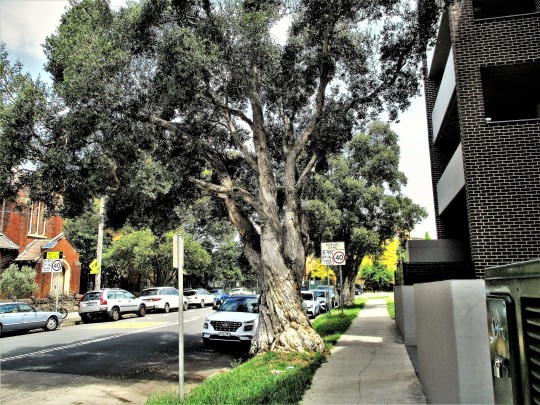
A couple of very old punk trees. Also known as Broadleaf Paperbarks (Melaleuca quinquenervia), they were widely planted in groves of shady street trees as part of job creation projects during the Great Depression. The trees thrive in the Inner West, which is at the very southern limit of their natural range. Many of those complete groves still stand, but this pair look like 90 year-old survivors by the girth of their trunks. Dulwich Hill.
#punk trees#old trees#streetscape#urban environment#street trees#shade trees#paperbarks#Great Depression#hard times#job creation#enormous trunks#flora#plantlife#inner west sydney
62 notes
·
View notes
Text



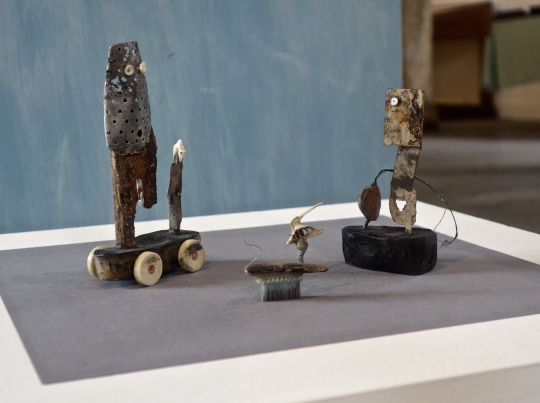


Images from Kathleen Fox's summer exhibit Dreaming the Found at Farley's Gallery in East Sussex. Clockwise from the upper right:
Dream Catcher (closest) & Bedtime Story
The Hunt for the Object of Desire
Song I, II, II
Last Known Habitat of the Blue-Bird Snake
Rain, Beautiful Rain
Crocodile Queen
"Concerned by the loss of ancient links with our archaic past and the natural world, these works are my attempt to uncover personal mythologies by soliciting the unconscious during the creation of assemblages and textures on two-dimensional pieces. Paper bark (Melaleuca quinquenervia) brought back from Australia forms the main figures in Song I, II, III and Crocodile Queen. It is a soft, finely layered bark from coastal areas used by First Peoples for practical, spiritual, and medicinal purposes.
Red sand from South Africa in both the two and three-dimensional works has a special significance for me. Seeing these pieces created between 1995 and 2021 all together I recognize the continuing influence of the ancient pulse felt in my homeland, South Africa. If anything, it appears to grow stronger the longer I’m at a distance from it."
Kathleen Fox
2 notes
·
View notes
Text
So, @bies-from-wildland tagged me in a music shuffle challenge like, two weeks ago, but it was intense two weeks and I didn’t use tumblr whatsoever. Anyway here we are.
rules: you can usually tell a lot about a person by the type of music they listen to! put your favorite playlist on shuffle and list the first 10 songs, then tag 10 people. no skipping
I’m gonna cheat a little and list songs from three playlist instead of one, because do you seriously expect me to choose ONE favourite playlist, it’s impossible.
1. Gang Śródmieście - Szpadel from one of the best polish feminist albums
2. Siksa - Upiór Siksa is more of a performance than just music, but she’s brilliant and I love her
3. Maanam - Kreon polish classic, english version, for when you want to feel eternal and dangerous
4. Anna von Haussvolff - The Mysterious Vanishing of Electra as the first comment under this youtube video reads, I like when the witches sing
5. Lucy Dacus - Timefighter song that makes me feel at peace with a lot of unpleasant but unavoidable things
6. Florence+The Machine - Big God ah, beautiful Florence and her coven dancing ferally
7. AURORA - Queendom one of my happy songs
8. Hard Times - Szanta o tonącej głowie the most beautifully melancholic piece here, made by an underrated band from my town
9. Pulp - Common people a memory from my year in London...
10. Benjamin Clementine - London ... and a song I listen to when I miss London. also Benjamin is so talented it should be illegal and has killer bone structure.
Really liked this challenge, I love to talk about music that makes me thrilled.
I’m tagging @melaleuca-quinquenervia @genderbandit @la-vie-en-lys
#music shuffle challenge#music#gang śródmieście#siksa#maanam#anna von haussvolff#lucy dacus#florence + the machine#aurora#hard times#pulp#benjamin clementine#I could list another ten. and another. and another
38 notes
·
View notes
Text
Melaleuca quinquenervia = “Punk Tree”
because I think I’m hilarious
12 notes
·
View notes
Text

Buried under colonial concrete, Botany Bay has even been robbed of its botany [...].
Our common understanding of the Kamay landscape, as recognised in the protected swamp remnant in Centennial Park, is based on a misremembering of the past. [...] The HMS Endeavour's week-long stay on the shores of Kamay in 1770 yielded so many botanical specimens unknown to western science, Captain James C**k called the area Botany Bay. [...] Since then, Kamay has become an icon [...]. [M]any of the assumptions about the historical landscape we hold today may actually be wrong. The site better reflects 20th-century European exploitation of the landscape than it does early or pre-British Botany Bay. [...] These swamps have largely disappeared under the suburbs, or have been corralled into golf course ponds [...] -- a sight familiar to anyone who has driven between Sydney city and its airport. [...]
One wetland remnant, called Lachlan Swamp, occurs at the springhead of the swamplands in Centennial Parklands. Boardwalks and signs at the site encourage visitors to imagine the swamps and the paperbark forest (Melaleuca quinquenervia) surrounding them as a relic of pre-British Sydney. We used the pollen technique at Lachlan Swamp to determine whether the contemporary ecosystem reflects the pre-European landscape being protected. And our results reveal that, at the time of British occupation, the swampland was [actually] surrounded by an open, Ericaceae-dominated heath. Casuarina and Leptospermum species were the dominant swamp trees, not the swamp paperbark. This plant community was present at the site for at least the previous 2,000 years, and was only replaced by the contemporary paperbark forest between the 1890s and 1970s. [...]
Ongoing work from the La Perouse Aboriginal Community led research team drawing on Indigenous knowledge and European history suggests this open heathland vegetation grew consistently across the Lachlan and Botany Swamps during and prior to European colonisation of Sydney. [...]

Today, the northern shore of Kamay acts as Australia's gateway to the world. It hosts Australia's busiest international airport [...]. From the early 19th century, urban development gradually overprinted a vast network of groundwater-fed swamplands, whose catchment extended north from Kamay to what is now the southern boundary of Sydney's CBD. [...]
Continuous cultural knowledge about the environment, held by local Dharawal people, can provide a rich picture of Kamay's botany and how it was used -- well before the arrival of the HMS Endeavour. For instance, the Garrara or grass tree (Xanthorrhoea), which is depicted in many early colonial paintings, is a multi-use plant used to construct fishing spears -- a tradition upheld today within the La Perouse Aboriginal community. Similarly, other food and medicinal plants have been long been used by this community. This includes Five Corners (Ericaceae), Native Sarsaparilla (Smilax), Lomandra (Lomandra) and multi-use heath and swamp plants such as the coastal wattle (Acacia longifolia), swamp oak (Casuarina glauca) and coastal tea tree (Leptospermum laevigatum). [...] Though Sydney's environmental past may be misremembered [...] its legacy is [...] coded into the remnant landscapes of pre-British occupation, and preserved in the continuous knowledge systems of the land's first peoples.
-------
Rebecca Hamilton, Dan Penny, Josephine Gillespie, and Shane Ingrey. “Buried under colonial concrete, Botany Bay has even been robbed of its botany.” The Conversation. 23 April 2020. [Photos also published alongside article.]
26 notes
·
View notes
Text
CORRESPONDENCES: Carrier & Essential Oils
This is a long post, the correspondences are under the cut.

Carrier Oils: Carrier oils, known also as base oils, are used to dilute essential oils before they are applied topically. They serve as the base for oil blends.
Essential Oils: Essential oils are concentrated liquids that contain the volatile (”the tendency of a substance to vaporize") aromatic compounds of plants. They are obtained via distillation and the oil alone should never be applied to the skin directly as some a reactive to heat, and light, and some will give you chemical burns. You are likely to have a reaction to essential oils.
CARRIER OILS:
ALMOND OIL, SWEET (Prunus Dulcis)
Ruled by Mercury and the Element of Air. Sweet Almond Oil makes a great carrier oil for blends that deal with prosperity, money and wisdom.
APRICOT KERNEL OIL (Prunus Armeniaca)
Ruled by Venus and the Element of Water. This makes a great carrier oil for blends that deal with love or emotions.
AVOCADO OIL (Persea Americana)
Ruled by Venus and the Element of Water. This makes a great carrier oil for blends that deal with love, lust or beauty.
CASTOR OIL (Ricinus communis)
Ruled by Mars and the Element of Fire. Castor oil makes a great carrier oil for blends that deal with protection and absorbing negativity.
COCONUT OIL (Cocos Nucifera)
Ruled by the Moon and the Element of Water. Fractionated Coconut Oil makes a great carrier oil for blends that deal with purification and protection.
GRAPESEED OIL (Vinis Vinifera)
Ruled by the Moon and the Element of Water. Grapeseed Oil makes a great carrier oil for blends that deal with fertility money and strengthening mental abilities.
HEMP SEED OIL (Cannabis Sativa)
Ruled by the Moon and Saturn and the Element of Water. Hemp Seed Oil makes a great carrier oil for blends that deal with healing, love, psychic ability and meditation.
JOJOBA OIL (Simmondsia Chinensis)
Ruled by the Moon and the element of Water. Jojoba Oil makes a great carrier oil for blends that deal with healing and love.
OLIVE OIL (Olea Europaea)
Ruled by the Sun and the Element of Fire. Olive Oil makes a great carrier oil for blends that deal with healing, peace, fertility and protection. In many traditions Olive Oil is an all purpose oil.
SUNFLOWER OIL (Helianthus Annus)
Ruled by the Sun and the Element of Fire. Sunflower Oil makes a great carrier oil for blends that deal with protection, fertility, health and wisdom.
ESSENTIAL OILS:
AMYRIS (Amyris balsamifera)
Anointing, astral projection, attraction, blessing, consecration, exorcism, healing, love, meditation, protection, purification, sacral chakra, spirituality.
ANGELICA ROOT (Angelica archangelica)
Exorcism, protection, healing, visions.
BASIL (Ocimum basilicum)
Business success, conscious mind (stimulates), happiness, lust, money, peace, prosperity, protection.
BAY LAUREL (Laurus nobilis)
Banishing, exorcism, luck, psychic ability.
BENZOIN (Styrax benzoin)
Purification, prosperity, attracts customers.
BERGAMONT (Citrus bergamia)
Business success, happiness, money, peace, physical energy, prosperity, protection, sleep.
BIRCH SWEET (Betula lenta)
Protection, purification, exorcism.
BLACK PEPPER (Piper nigrum)
Courage, physical energy, and protection.
BLUE TANSY (Tanacetum annuum)
Water, Venus, immortality, youth, longevity.
CAJEPUT (Melaleuca cajeputi)
Purification, protection, dispel negative thoughts and energies, break habits.
CAMPHOR (Cinnamomum camphora)
Celibacy, crown chakra, physical energy, psychic energy, purification.
CARDAMOM (Elettaria cardamomum)
Love, lust.
CARROT SEED (Daucus carota)
Grounding, fertility.
CATNIP (Nepeta cataria)
Cat magic, love, beauty, happiness.
CEDARWOOD (Cedrus atlantica)
Blessing, health (maintain), heart chakra, meditation, money, protection, psychic energy, purification, self-control, spirituality, unhexing.
CHAMOMILE (Matricaria recutita & Anthemis nobilis)
Meditation, peace, sleep.
CHILLI SEED (Capsicum annum)
Protection, exorcism, fidelity, hex-breaking, love.
CINNAMON (Cinnamomum burmanii /cassia /zeylancium)
Astral projection, base chakra, business success, health (maintain), luck, lust, magical energy, meditation, money, physical energy, prosperity, protection, psychic awareness, purification, spirituality.
CITRONELLA (Cymbopogon nardus / winterianus)
Exorcism (exterior use), health (maintain), purification, unhexing.
CLARY SAGE (Salvia sclarea)
Vivid dreams.
CLOVE BUD (Eugenia or syzgium aromaticum)
Balances chakras, business success, courage, divination, exorcism, healing, heart chakra, love, money, prosperity, protection, psychic awareness.
COFFEE BEAN (Coffea arabica)
Grounding, Earth magic, Mars, ritual stimulant.
CYPRESS (Cupressus sempervirens)
Longevity, healing, comfort, protection.
ELEMI (Canarium luzonicum)
Mental and psychic ability, spiritual balance, solar plexus chakra.
EUCALYPTUS (Eucalyptus globulus)
Healing, health (maintain), protection, psychic energy, purification.
FIR NEEDLE (Abies sibirica)
Mind clearing, memory, communication, purification before ritual, , protection, hex removal.
FRANKINCENSE (Boswellia serrata / carterii)
Blessing, consecration, courage, exorcism, meditation, protection, purification, solar plexus chakra, spirituality.
GERANIUN (Pelargonium graveolens /x asperum)
Happiness, protection.
GINGER ROOT (Zingiber officinale)
Attraction, business success, courage, love, lust, magical energy, money, peace, physical energy, prosperity, purification, sex.
GRAPEFRUIT (Citrus paradisi)
Purification.
HELICHRYSUM (Helichrysum italicum)
Creativity, intuition, invoke spirits, scrying, channeling, awareness, calm, patience.
HO WOOD (Cinnamomum camphora)
Cleaning, banishing, subdue sexual desire, celibacy, chastity, psychic power, dream work.
HYSSOP (Hyssopus officinalis)
Purification, protection.
JUNIPER BERRY (Juniperus communis)
Protection, anti-theft, love, exorcism, health.
LAVENDER (Lavandula stoechas/angustifolia/latifolia /hybrida)
Balances chakras, business success, celibacy, conscious mind (stimulates), happiness, health (maintain), love, peace, protection, purification, sleep, third-eye chakra.
LEMON (Citrus limonum / limon)
Balances chakras, health (maintain), love, physical energy, purification.
LEMONGRASS (Cymbopogon citratus /flexuosus /schoenanthus)
Psychic awareness, psychic energy, purification, spirituality.
LIME (Citrus aurantifolia)
Physical energy, protection, purification.
LITSEA (Litsea cubeba)
Energy, rejuvenation, letting go.
MARJORAM (Origanum majorana)
Celibacy, happiness, peace, sleep.
MUGWORT (Artemesia vulgaris)
Moon, divination, lucid dreaming, prophetic dreams, protection.
MYRRH (Commiphora myrrha)
Astral projection, attraction, balances chakras, blessing, consecration, crown chakra, exorcism, healing, meditation, protection, psychic energy, spirituality, unhexing.
MYRTLE (Myrtus communis)
Love, good luck, fertility, and Venus, feminine and water aspects.
NIAOULI (Melaleuca quinquenervia)
Purification, healing, protection, clearing negative energies, aura cleansing.
NUTMEG (Myristica fragrans)
Luck, magical energy, meditation, money, physical energy, psychic awareness.
OPOPANAX (Commiphora guidotti)
Death/resurrection, divination, Pluto, Scorpio, change.
OREGANO (Origanum vulgare)
Happiness, tranquility.
PALMAROSA (Cymbopogon martini)
Healing, love.
PALO SANTO (Bursera graveolens)
Luck, cleansing, air element.
PATCHOULI (Pogostemon cablin)
Attraction, banishes negativity, growth, love, luck, mastery, money, peace, physical energy, prosperity, sex.
PEPPERMINT (Mentha arvensis / piperita)
Conscious mind (stimulates), exorcism, health (maintain), protection, purification.
PETITGRAIN (Citrus aurantium)
Conscious mind (stimulates), protection.
PINE (Pinus sylvestris)
Exorcism, grounding, healing, health (maintain), magical energy, money, physical energy, protection, purification.
ROSEMARY (Rosmarinus officinalis)
Conscious mind (stimulates), exorcism, health (maintain), heart chakra, longevity, love, protective, remembrance, third-eye chakra, vitality.
ROSEWOOD (Aniba rosaeodora)
Mars, Moon, Venus, spirit element, fire element, intuitive health, beauty, divination, scrying, healing rituals, maturity, wisdom, femininity.
SAGE, DALMATION (Salvia officinalis)
Conscious mind (stimulates), exorcism, money, purification, wisdom.
SAGE, WHITE (Salvia apiana)
Cleansing spaces and magical objects, banish negative energy.
SANDALWOOD (Santalum album)
Anointing, astral projection, attraction, blessing, consecration, exorcism, healing, love, meditation, protection, purification, sacral chakra, spirituality.
SPEARMINT (Mentha spicata)
Comfort, healing, sleep (for protection).
SPIKENARD “JATAMANSI” (Nardostachys jatamansi)
Good luck, fidelity, and health.
STAR ANISE (Illicium verum)
Psychic power, luck.
SWEET ORANGE (Citrus sinensis)
Balances chakras, divination, happiness, joy, love, luck, magical energy, money, physical energy, psychic energy, purification, sacral chakra.
TANGERINE (Citrus reticulata)
Magical energy, purification.
TEA TREE (Melaleuca alternifolia)
Purification.
THYME (Thymus vulgaris)
Conscious mind (stimulates), courage, health (maintain), purification.
TURMERIC (Curcuma longa)
Purification, protection.
VALERIAN ROOT (Valeriana officinalis)
Love, sleep, purification, protection.
VANILLA (Vanilla planifolia)
Love, lust, mental power.
VETIVER (Vetiveria zizanoides)
Divination, exorcism, love, money, peace, protection, unhexing.
WINTERGREEN (Gaultheria procumbens)
Protection, healing, hex-breaking.
YLANG YLANG (Cananga odorata)
Love, lust, peace, sex, throat chakra.
[Sources: [X] [X]
If you like my content and would like to help me keep providing free stuff for my gorgeous Ghoul Gang, you can tip your witch here: Paypal.
14 notes
·
View notes
Text
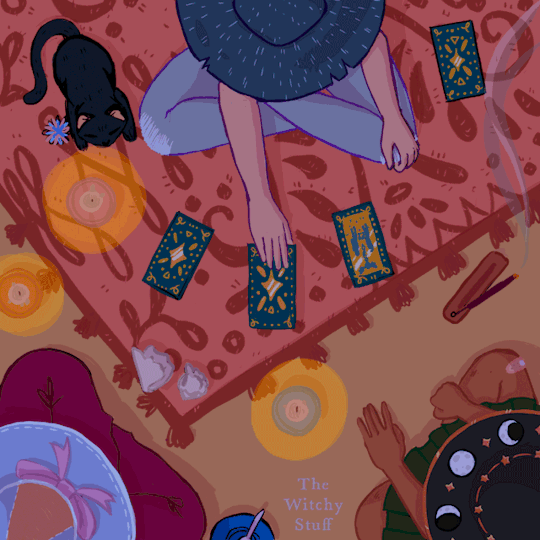
Hey Witches, a post like this has probably already been made but I wanted to make one myself.
Today I wanted to talk about some of our favorite things. Herbs/Plants/roots and our furry friends, Cats! (and maybe a little bit about birds, since i personally have a ‘tiel and i never see information on tumblr about birds)
As I am gearing up to adopt not one but two cats with my Partner, this is information important for me to know as a Witch but instead of just stuffing it into my book of shadows, I figured I would share with the class, because this is important! I will be covering as many common house plants and herbs we commonly use as possible from numerous sources, so let’s get started!
Plants that are Deadly to Cats:
The Liliaceae family
Azaleas
Rhododendrons (also deadly for birds)
The Bulb of a Tulip
Oleanders (also deadly for birds)
Yew (also deadly for birds)
Daffodils
Sago Palms
Castor beans (also deadly for birds)
Cylacem roots
Mari*juana
Mistletoe (also deadly for birds)
Poisonous Plants to Cats:
(poisonous plants may not cause immediate death in your pet, but they are still highly dangerous and should be watched out for.)
Begonia
Eucalyptus
Chrysanthemum
Schefflera
pothos
Aloe (the gel is safe for cats, the plant is not)
English Ivy
Poinsettia (only mildly toxic, still toxic)
Kalanchoe
Herbs that are Poisonous/Deadly for Cats:
Foxglove
(extremely dangerous) (Deadly to birds)
Comfrey
St. John’s Wort
Valerian and Pennyroyal
can be safe in their plant form, but dangerous in concentrated form.
Spanish Thyme
Garlic
Primrose
Barberry
Goldenseal
Black cohosh
Blue cohosh
Buckeye
Chamomile
Holly Berries
Jimson weed
Tobacco
Tarragon
Marjoram
Oregano
Bay leaves
Borage
Sorrel
Lemongrass
Lavender (in large quantities)
Mint (in large quantities)
Essential Oils:
while this post is on plants, I wanted to touch base on EOs. It’s a hot debate whether you should have these around pets or used on pets. you should be choosy with the EOs you do use if you use them and
ALWAYS CONSULT YOUR VET BEFORE USE, EVEN IF YOU'RE JUST USING A DIFFUSER.
EOs that your cat’s liver cannot break down correctly when inhaled or put on the skin or consumed are as follows:
Basil
Cinnamon Bark
Clove
Laurus Nobilis
Melaleuca Quinquenervia
Mountain Savory
Oregano
Tea Tree
Thyme
Wintergreen
in general it is recommended your cat should not ingest EOs or absorb EOs through inhalation. But some
“safer”
ones (in small doses) include:
lavender
copaiba
helichrysum
frankincense
Always consult your vet before using EOs on your pet.
also i happen to know as a fun little fact that succulents are deadly for birds.
i would also say keep your cat away from deadly nightshade, wolfsbane, and things of that nature, things you know are poisonous. Keep salt lamps away from cats, as they will lick them and cause serious dehydration in themselves and perhaps even death.
i didn’t include everything that was deadly for birds because this was focused more on cats but! if anyone wanted i could always do a post on birds.
always do your research and always cross reference anything you see online, especially on tumblr! blessed be.
- Grim
Sources:
Herbs and Plants that are Poisonous to Cats
Bird Safety: Poisonous and Safe Plants for Birds
Herbs Dangerous to Household Pets
The Pet Safe Kitchen
Essential Oils and Cats
#witchy#witchcraft#baby witch#cats#green witch#hearth witch#kitchen witch#witchblr#drug mention#information#important#bos
2 notes
·
View notes
